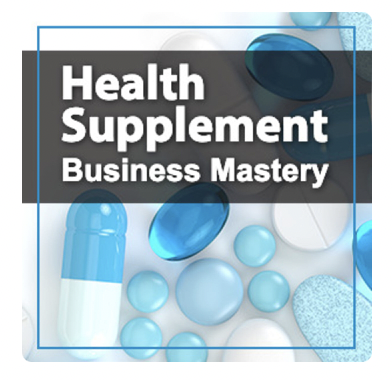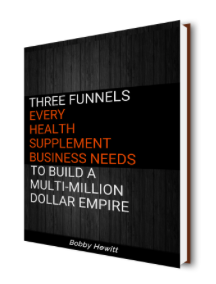After 7 years of focusing on conversion optimization for dietary health supplement funnels, I’ve just about seen and tested it all.
Split testing just about everything from simple headline tweaks to complex price tests. Some things do work every time. Those go into our best practices playbook.
But the ugly truth is, that there is no one single trick that will massively move your conversion rate up to the point of selling hundreds and thousands of sales a day in one shot.
The secret is in doing the basics really, really well.
In this article I breakdown the basics into 4 lessons learned after optimizing over $100 Million dollars in client sales funnels.
1. Know Your Customer
Most marketers know their customer demographics. Some marketers have a written customer persona or “avatar” that lists out what TV shows their customers watch, how much their household income is and how many kids they might have.
All of that is practically a waste of time. It’s good to know for buying traffic but it won’t get you a conversion lift. At least not when selling a dietary supplement.
To propel you into the 8 figure realm you really have to understand your customer. Not their age and interests, but their hopes, fears, frustrations, and more. What drives them to buy your bottle of Turmeric after buying 4 other brands?
That kind of stuff you can’t learn by making a customer persona document. Or buying an expensive report based on credit card data.
When you really know your customer, you can express their problem better than they can, on both an emotional and intellectual level. Once you do that, they will trust and believe in your solution.
The best way I’ve found to uncover that level of understanding for our clients customers is through a combination of open-ended online surveys and one-on-one phone interviews.
Some of the best sales copy comes word-for-word from these interviews. There’s gold in the EXACT words they use to describe their problems, hopes and concerns.
This soft quantitative data is the kind that you can only get from talking to buyers.
2. Sell The “Cure”
Granted you can’t use the word or imply a “cure” to any condition or disease. That’s simply not compliant. Although many marketers do cross that line. That’s a personal ethical choice everyone needs to make on their own.
Regardless of where you stand. SELLING the “cure” is different from making a claim. When I say SELLING the “cure” I mean tapping into their pain.
Prevention and incremental wellness doesn’t sell. People buy urgency. Immediate needs vs long term benefits. If it’s too easy to put off or takes too long to see and feel results, people will put it off. That’s just human nature. As a result they will not buy. Sure, the strongest willed or highly motivated might take you up on your offer, but there’s not enough of those people to build a business on.
Ask yourself, what emotions are at the root of their pain? (or better yet talk to them one on one to find out.)
Because, emotions drive decisions. The first step is knowing which emotions are important and the second step is to trigger those desired emotions. This is how you tap into the subconscious mind of the buyer.
The lower processes of the brain is where emotion comes from. This is why we must use stories, metaphors and imagery to tap into them.
Only after leading the subconscious to an emotional buying decision, do we then appeal to the higher level of the brain (the neo-cortex) to justify the decision through logic and reason. That’s the unique mechanism part of your sales letter. But the emotion must come first.
3. Make a Strong Offer
The offer is one of the most powerful levers for conversion. A strong offer does not just include price. Although that’s part of it, there’s so much more, like:
Risk Reversal (Does the guarantee, REALLY remove ALL risk?)
Urgency (Is there a reason to buy now?)
Value (What’s the value of the benefit and how does it compare to the price?)
Objection Handling (What objections can you displace or alleviate for the prospect?)
Bonuses (What add on is so valuable that it could be a product in and of itself?)
All of these factors go into making a strong offer. A quick rule of thumb is to ask yourself this question about your offer.
Do you really make it harder for your prospect to say “no” than it is to say “yes”?
There are 12 different types of offers you can use in this article if you wish to learn more.
4. Both Proof and Science go Together
Most direct response copy writers simply lean on a logical argument, with scientific studies, testimonials or a guarantee to support proof, but that’s not enough.
Most forms of proof are not very different than what all the other competitors out there are saying.
Both proof and science are a very important part of selling dietary supplements.
Proof makes prospects feel comfortable. You can almost never have enough proof.
Science, satisfies the logic part of the brain that justifies the decision.
Done right it answers the question HOW.
How does this supplement work?
How is it different than all the others that I’ve tried before?
How will that solve my problem or help my condition?
But you must also answer the question WHY.
Why will this work?
Always remember, both the HOW and the WHY must be answered.
It’s All About The Basics
The secret to successfully selling dietary supplements in the online direct to consumer space is to master the basics.
You’ll find this in every art, from music to painting. It’s all about being really good at the basic stuff, and that’s the part that’s so hard to do. Just doing the basics and doing them at the level of mastery are two vastly different things.
Discover the 3 funnels that can help your health supplement business succeed.

Listen to the Health Supplement Business Mastery Podcast for for dietary supplement entrepreneurs and marketers.



